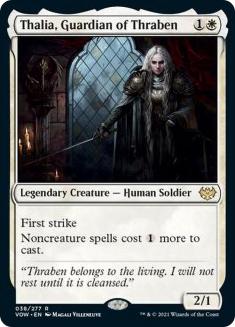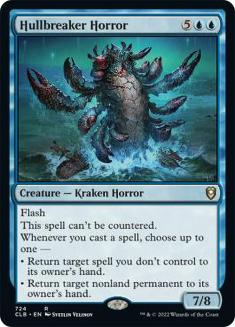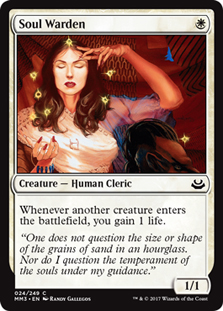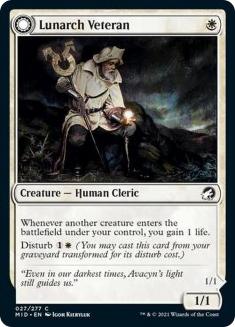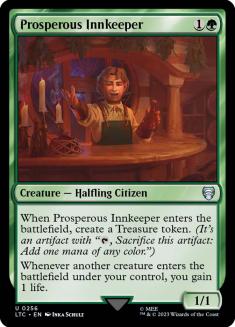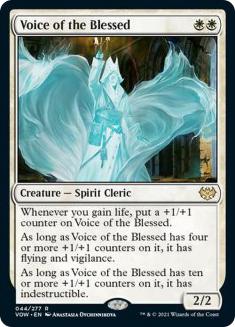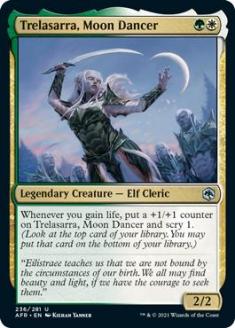For those of you who don’t know, the Innistrad Championship takes place this weekend. Not only that, so do the Limited Arena Open, the rescheduled Standard Red Bull Untapped 2021 International Stop V, and Store Championships around the Globe. Needless to say, there’s a ton of digital and tabletop Magic happening this weekend with many formats to choose from.
Today we’ll be focusing on the Innistrad Championship, as that’s what I’ve been preparing for and will eventually participate in starting Friday. I’ve been testing more than I thought I would and feel like I’ve got a fairly good grasp on both Arena formats. So without further ado, let’s break down both the Standard and Historic formats for anyone planning on playing them this weekend!
Before we start I just want to throw a huge shout-out to my testing team. Things have been a little… different with all the new Organized Play announcements, but this team worked hard and made the experience a fun one!
Thank you:
- Javier Dominguez
- Beatriz Grancha
- Luis Salvato
- Seth Manfield
- Brian Braun-Duin
- Toni Ramis
- Anthony Lee
Standard
So where do we begin with Standard?
Well, for starters, nothing major has changed. Izzet Epiphany, Mono-White Aggro❄, and Mono-Green Aggro❄ are all still heavily played. Behind that, there are some Jund Midrange, Orzhov Control, and random Dimir/Esper Control decks rounding out most of the metagame. In all honesty, I don’t think it’s smart to play anything besides the top three. People still do it, of course, but the data points have always suggested them to be weak choices.
To find anything interesting about this format right now, you really need to appreciate the subtleties. To paint the best picture I can, I’ll walk us through the history of Standard ever since Innistrad: Crimson Vow was released.
Thalia, Guardian of Thraben was one of the most influential cards to be released from Innistrad: Crimson Vow. It slotted quite nicely into Mono-White Aggro❄, and was a massive boon for the deck against Izzet Epiphany and even Mono-Green Aggro❄. Izzet Epiphany retaliated by going up to four copies of Spikefield Hazard, and some variants even started incorporating Frost Bite into their lists. Hell, Cinderclasm is now a fairly common one- or two-of in the maindeck. Mono-Green’s reaction was to start casting Esika’s Chariot for five mana.
With these new changes to Izzet Epiphany’s removal suite, Mono-White should start changing its threat composition as well. Cards like Elite Spellbinder are just a liability now thanks to all the cheap removal and the new gameplans Izzet decks have for the matchup.
Creatures (33)
- 4 Thalia, Guardian of Thraben
- 1 Legion Angel
- 4 Luminarch Aspirant
- 4 Usher of the Fallen
- 2 Reidane, God of the Worthy
- 1 Elite Spellbinder
- 4 Brutal Cathar
- 4 Intrepid Adversary
- 2 Sungold Sentinel
- 3 Adeline, Resplendent Cathar
- 4 Hopeful Initiate
Lands (23)
Spells (4)

Another Innistrad: Crimson Vow card that’s been “making waves” is Hullbreaker Horror. Unlike Thalia, Guardian of Thraben’s influence to homogenize Mono-White lists, Hullbreaker Horror has caused Izzet to completely break down into a multitude of unique compositions. Honestly, this archetype is such a mess right now that it probably deserves its own article, but let’s give it a shot.
Hullbreaker Horror is a fantastic card in the mirror, but not as good as we originally thought. It’s embarrassing against Mono-White, and honestly at its best in Game 1 in the mirror. After sideboarding, both decks get to remove their dead cards, making for more streamlined games. More importantly, they don’t need to fire off their copies of Divide by Zero as quickly as they can since they don’t have access to other interactive spells like Test of Talents. It’s still good, don’t get me wrong, but not as mirror-match-warping as I originally thought it would be.
The biggest impact Hullbreaker Horror has had on Izzet Epiphany is it distracted the lot of us into working on it so damn much. Now we’re all over the place when it comes to how this deck should be built with very few people coming to a consensus. Hell, we don’t all even agree if Frost Bite should be in the deck or not! I mean, seriously, just look at all these unique builds of this deck!
The Deck I Almost Registered
Creatures (3)
Lands (20)
Spells (37)

No Maindeck Creatures
Lands (22)
Spells (38)

Some Creatures Maindeck
Creatures (3)
Lands (23)
Spells (34)

Even More Creatures and Less Combo Maindeck
Creatures (6)
Lands (21)
Spells (33)

Same Concept but with Frost Bite
Creatures (6)
Lands (21)
Spells (33)

They Have the Combo in the Sideboard!
Creatures (6)
Lands (22)
Spells (32)

Who Even Needs the Combo?
Creatures (6)
Lands (20)
Spells (34)

There’s really not a great way to unpack all of this today. It’s just such a mess! Like, I could try, but the truth is I even gave up on Izzet Epiphany on the final day before decks were due for the Innistrad Championship. I just couldn’t figure it all out, and kept going in circles trying to find the best version/cards to play. Some versions were better against creatures, but cost too many points in the mirrors. Others, like the one I almost played, felt fantastic against Mono-White and mirrors, but just couldn’t beat Mono-Green.
So instead of trying to get on that horse again trying to dissect every little aspect of Izzet Epiphany, I’m going to throw y’all some tips and tricks, plus touch on things in a more macro sense.
Tips and Tricks I Learned as an Izzet player
- Don’t play Smoldering Egg in the maindeck. It just dies to most removal spells, and is often a liability.
- Lier, Disciple of the Drowned is actually better in Game 1 against Mono-White than it is after sideboard because they don’t have as many answers to it in Game 1.
- Goldspan Dragon is fantastic in the mirrors. It’s difficult to get punished by your opponent when you slam in on Turn 5, except for when they cast their own copy, which further proves how awesome it is!
- Maindeck cards for the mirrors like Behold the Multiverse and Test of Talents are amazing. Obviously they suck against aggro when you can’t discard them to Unexpected Windfall, yet often win games when drawn against other Izzet decks.
- If you play two copies of The Celestus, make sure to sideboard one copy out on the draw in the mirrors. It’s very easy to get punished when you tap out on Turn 3 on the draw.
- Sideboard out all of your copies of Alrund’s Epiphany against Mono-White, but leave in a couple of Galvanic Iterations. They are actually really good, and much better than the third or fourth copy of Unexpected Windfall.
Broad-Strokes Metagaming
Like I mentioned early, I was prepared to submit Izzet Epiphany for the Innistrad Championships. It wasn’t until my teammate Seth Manfield said he might audible to Mono-Green that I even considered any other deck. I was fascinated with the idea of switching to the deck, but I couldn’t decipher if it was due to me hating the rat race that is tuning Izzet Epiphany or that Mono-Green might just be a very good choice for this tournament.
You see, most decisions Izzet Epiphany players have been making, including myself, were making the deck stronger against Mono-White and the mirrors. These conscious decisions are at the expense of the Mono-Green matchup. Things like trimming Fading Hope, maindecking Cinderclasm, and removing Cyclone Summoner from the deck to make room for Hullbreaker Horror all played a role. Hell, even the bigger sweepers like Burn Down the House are starting to see less play.
Obviously nothing’s changed with the Mono-White matchup. I mean, I guess it’s nice if others start removing copies of Elite Spellbinder from their lists too, but I don’t expect many will, even if I think they should. It’s just that if we expect Izzet variants to be the combined most-played deck, Mono-Green might just be the best choice.
So yeah, I’m playing Mono-Green Aggro❄ and I think I’m happy about it.
Creatures (21)
- 4 Kazandu Mammoth
- 4 Old-Growth Troll
- 4 Sculptor of Winter
- 4 Werewolf Pack Leader
- 2 Ulvenwald Oddity
- 3 Ascendant Packleader
Lands (24)
Spells (15)

Now odds are I’ll be going back to being an Izzet gamer after this tournament. I honestly don’t even enjoy playing the deck. It’s just that we expect the metagame to have a larger than usual Izzet Epiphany representation, and a less than average percentage of Mono-White as Izzet continues to target it. I also wouldn’t be surprised if other gamers didn’t come to the same conclusion and be on Mono-Green as well.
Historic
So Historic is a much different beast from Standard. With recent bannings and suspensions along with Jumpstart: Historic Horizons pumping a ton of Modern Horizon 2 cards into the mix, it’s almost like the format is brand new. That honestly made it very difficult to metagame for the tournament, as there are just so many decks that “could” show up, and even more we never even knew existed! Instead of trying to metagame intensely, we decided to put a much bigger emphasis on what we thought felt the most powerful.
In no particular order, here are our predictions for the best five archetypes in Historic:
1. Golgari Sacrifice
Creatures (12)
Lands (24)
Spells (24)

I thought Golgari Sacrifice was an underpowered archetype until I gave it a spin. The truth is this deck can be an absolute nightmare to play against if your plan is based around killing or attacking with creatures. It just has so many tools to generate card advantage, invalidate creatures, and eventually sweep the battlefield with The Meathook Massacre. Once the game’s at that stage, the additional life loss/gain triggers help the deck turbo-power into a late-game snowball machine!
2. Selesnya Humans
Creatures (33)
- 4 Thalia, Guardian of Thraben
- 4 Thraben Inspector
- 4 Thalia's Lieutenant
- 4 Skyclave Apparition
- 4 Luminarch Aspirant
- 4 Elite Spellbinder
- 4 Esper Sentinel
- 1 Brutal Cathar
- 2 Intrepid Adversary
- 2 Adeline, Resplendent Cathar
Lands (23)
Spells (4)

Selesnya Humans is probably the most anticipated deck for the tournament, but that still shouldn’t take away from its clear power. The deck’s just so clean and aggressive, and it gets to play Collected Company! One thing you may notice is our builds have Skyclave Apparition in the maindeck. I don’t remember who suggested it, but it totally made sense once we tried it. Sure, it’s not a Human, but having maindeck answers to cards like Graffdigger’s Cage, Trail of Crumbs, and Portable Hole were much better than a few extra counters here and there.
3. Izzet Phoenix
Creatures (14)
Lands (21)
Spells (25)

Izzet Phoenix got some major new toys to play with in the form of Unholy Heat and Dragon’s Rage Channeler. It’s much leaner and more aggressive than it ever was before. Still, the inclusion of Esper Sentinel into the format has made things difficult for the spell-based Phoenix deck.
I’ve also seen a lot of people trying Smoldering Egg or Demilich varitants. Stop! Sprite Dragon is amazing and works well alongside Dragon’s Rage Channeler. It’s also a great threat to have when an opponent brings in graveyard hate. Just play what works!
4. Jeskai Control
Creatures (4)
Planeswalkers (2)
Lands (26)
Spells (28)

I tend to hate playing control, but those decks tend to not have Torrential Gearhulk and Archmage’s Charm in them. Seriously, I thought the non-Gearhulk Jeskai decks were way better before, but the inclusion of Archmage’s Charm really tips the scales for me. Jeskai Control might just be “okay,” but that card is messed up!
Still, it’s Jeskai Control, and even if I actually like it, I have a reputation to uphold, so I’ll simply leave it at, “Deck’s aight.”
5. Selesnya Company
Creatures (32)
- 4 Soul Warden
- 4 Heliod, Sun-Crowned
- 4 Skyclave Apparition
- 4 Prosperous Innkeeper
- 4 Scurry Oak
- 4 Trelasarra, Moon Dancer
- 4 Lunarch Veteran
- 4 Voice of the Blessed
Lands (24)
Spells (4)

This deck is so cool, and may honestly be the strongest archetype going into the Historic rounds of the Innistrad Championship. This deck also proved to me just how biased of a Spike I am, as I probably wouldn’t have even touched it if it wasn’t for losing to it a couple of times in a row. Like, how can lifegain.dec be good? Well, it is in fact good, because of redundancy.
This trio and duo help give this deck a serious and consistent Plan B. Before Voice of the Blessed was printed, this archetype just couldn’t put pressure on an opponent, making it very difficult to push the combo through. Now you can easily sandbag the combo while smashing face with some large and in charge threats.
Anyway, that’s all I’ve got for you today. Now it’s time for me to go master my decks before Round 1 begins! Good luck this weekend in whatever you play, and I’ll see you next week for (if Cedric allows) a much-deserved comprehensive breakdown on Izzet Epiphany!


